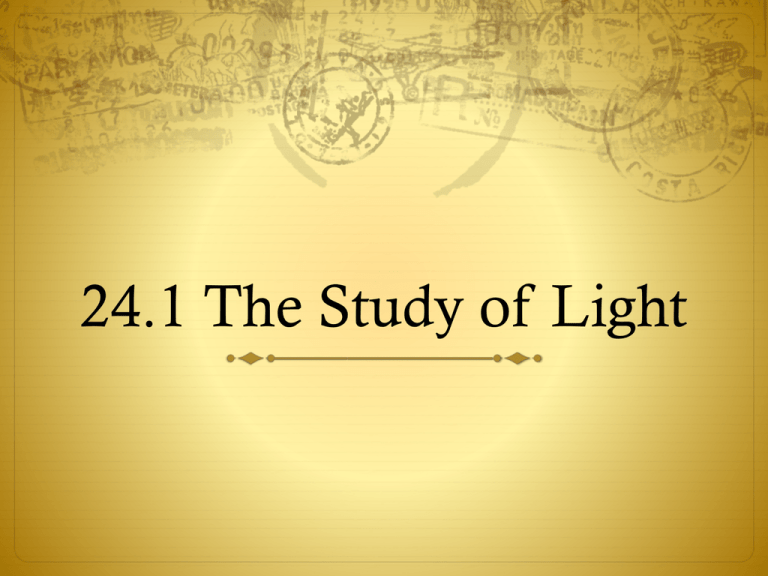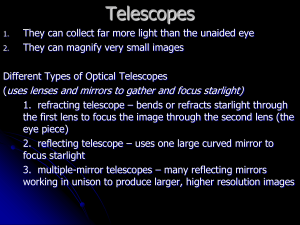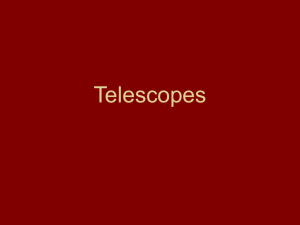24.1 The Study of Light
advertisement

24.1 The Study of Light Electromagnetic Radiation Includes gamma rays, X-rays, UV light, visible light, infrared radiation, microwaves, & radio waves Electromagnetic Spectrum Classifies radiation according to wavelength & frequency Photons – small packet of light energy Copy diagram on pg. 674 fig. 1 Spectroscopy The study of the properties of light that depend on wavelength Continuous spectrum – produced by an incandescent solid, liquid, or gas under high pressure (emit when hot) Absorption spectrum – produced when visible light is passed through a relatively cool gas under low pressure. (gas absorbs selected wavelengths of light) Emission Spectrum – produced by a hot gas under low pressure (bright lines) When the spectrum of a star is studied, the spectral lines act as “fingerprints” The Doppler Effect Occurs for both sound and light Change in wavelength of a wave that is emitted from a source that is moving away or toward an object Light source that is moving away = redder Light source that is moving toward = blue Doppler Effect is used to determine whether a star or other body in space is moving away from or toward Earth REVIEW REVIEW REVIEW What types of radiation make up the electromagnetic spectrum? Compare the 3 types of spectra How are the elements in a star determined? How can the Doppler Effect tell detection? 24.2 Tools for Studying Space Refracting Telescopes Bend or refract light Objective lens produces an image by bending light from a distant object so that the light converges at an area called the focus (central pt.) Chromatic aberration ( color & to go astray) Property of a lens whereby light of diff. colors is focused at diff. places (produces a halo around it) Blue light is in focus = reddish halo Red light is in focus = bluish halo https://www.youtube.com/watch?v=VzSjqNE2AHM Reflecting Telescopes Chromatic aberration is avoided Use a concave mirror that focuses light in front of a mirror rather than behind Most large optical telescopes are reflectors Light does not pass through a mirror so the glass for a reflecting telescope does not have to be of optical quality https://www.youtube.com/watch?v=ic2aPxePlEs Properties of Optical Telescopes Both refracting & reflecting telescopes have 3 properties that help astronomers Light gathering power Resolving power Magnifying power Detecting Invisible Radiation Radio telescopes – focuses the incoming radio waves on an antenna which absorbs & transmits these waves to an amplifier just like a radio antenna Poor resolution (-) Less affected by turbulence than optical telescopes (+) Radio telescopes are hindered by human made radio interference (hidden in valleys to block these types of interference) Space Telescopes Orbit above Earth’s atmosphere & produce clearer images than Earth-based telescopes Hubble Space Telescope 1st space telescope built by NASA REVIEW How does a refracting telescope work? Compare and contrast a refracting telescope and a reflecting telescope How do radio telescopes gather data? Why do space telescopes obtain clearer images than Earth based telescopes?




